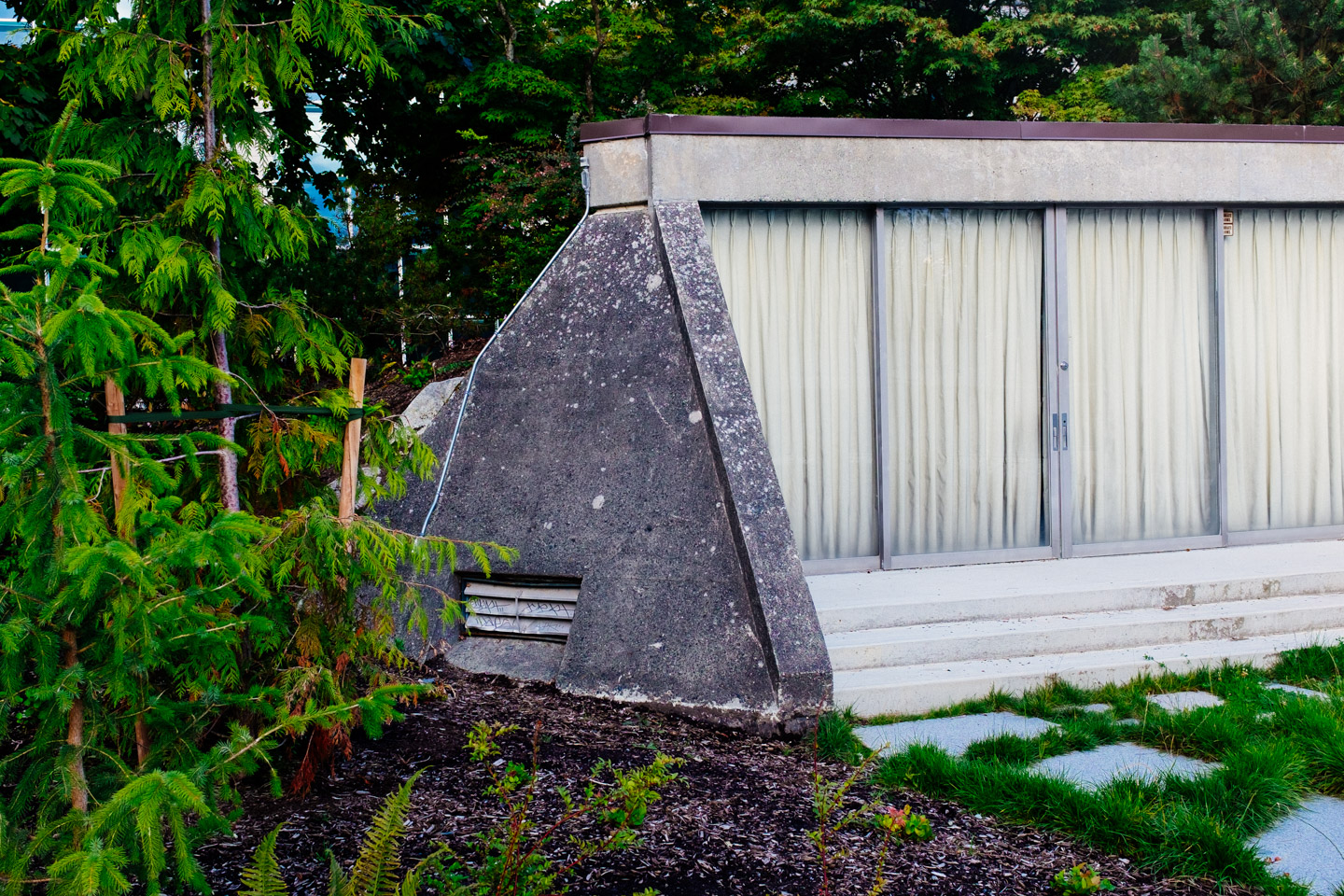
The Pacific Northwest has a very specific architectural feeling to it.
Dark wet concrete, sometimes pitted and rusty from the sea air, seems at home against the rippled grey sky. The damp greens and browns of parks and public spaces are a natural contrast against the monochrome palette of giant cement staircases poured over the hilly landscape. Extremely comfortable ergonomic shoes on a really hard surface.
This sort of International Brutalism that pervades Canada’s infrastructure was birthed during our centennial in ‘67. Centered around Helvetica Bold, Cartier and the simple athletic pictographs of that year’s Monteal Olympics.
It seems the style stuck around for about 20 years, establishing itself as the de facto system for our national parks’ signage, museums and rec centres1.

The Museum of Anthropology at UBC is a great example of this. I rode the bus out to visit when I was in Vancouver in September on many friends’ recommendations but nobody told me about the building itself.
Inspired by first nations’ building techniques of the area, Arthur Erickson designed it in 1971 during the maturation of this design movement. It’s a triumph of concrete and glass seated in fir trees at the north end of UBC’s campus. It looks west out onto Straight of Georgia from the remains of a World War II gun battery.
But despite being interested in 20th century architecture since high school and taking university courses on the topic Erickson was totally unmentioned. Frank Gehry and Daniel Libeskind seemed to be the only Canadians worth mentioning, whose works are mostly ignorant—even spiteful—of their surrounding environments2. Erickson preferred to enhance and integrate, emphasising function but still creating drama and beauty. The MOA functions fantastically as a museum but overachieves by also being a building of interest and complexity. A visit takes you on a journey from the grand glassed hall of totems flooded by natural light, exhibits in more traditional gallery-like spaces and the endless archival collection rooms. You’re never far from that cool grey texture of concrete.
Maybe the best example of this unity is the Evergreen Building, best described by its landlord’s website:
Designed in memory of a former escarpment, this unique building is stepped in a series of receding, and angled balconies, recalling mountainside, hence the building’s name, Evergreen. Plantings overflow the concrete brows into which the railings are set, creating the effect of a terraced garden and softening the edge of the building’s distinctive profile.
Erickson said of concrete in 2000, “It’s still a wonderful material. To cover a building with stone is to disguise its truth. I try to make concrete as beautiful as possible — I treat it as a precious material.”
After looking up Erickson’s works I felt a new understanding of the architectural landscape of my upbringing. While not as flashy as a giant piece of folded and curved steel, Erickson’s style obviously had a profound influence on public buildings of the 70’s and 80’s. Smaller projects like the civic centres, arenas and public schools of my Ontario childhood could more economically follow his lead to create a bit more visual interest than simple brick or drab prefabricated buildings.

-
Check out Canada Modern for a great archive of this style. ↩
-
My favourite example of this is when sunlight reflected off of the stainless steel exterior of Gehry’s Walt Disney Concert Hall, focused and intensified by it’s curved surface started frying people on nearby sidewalks. Cladding a building with polished metal in sourthern California doesn’t demonstrate a lot of forethought. ↩